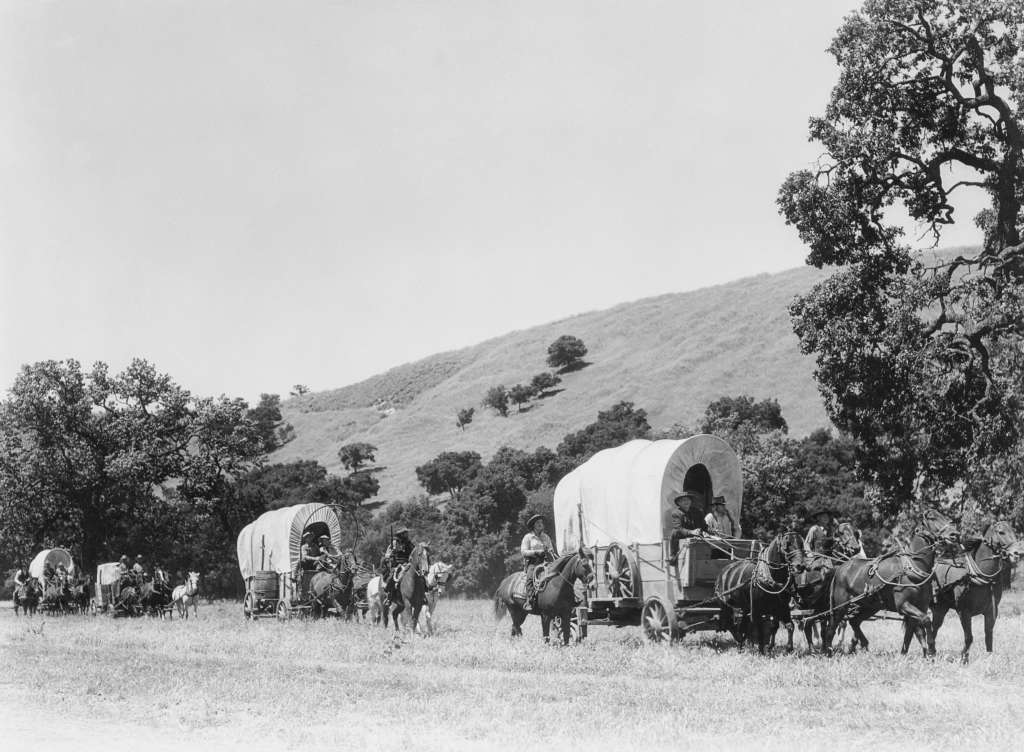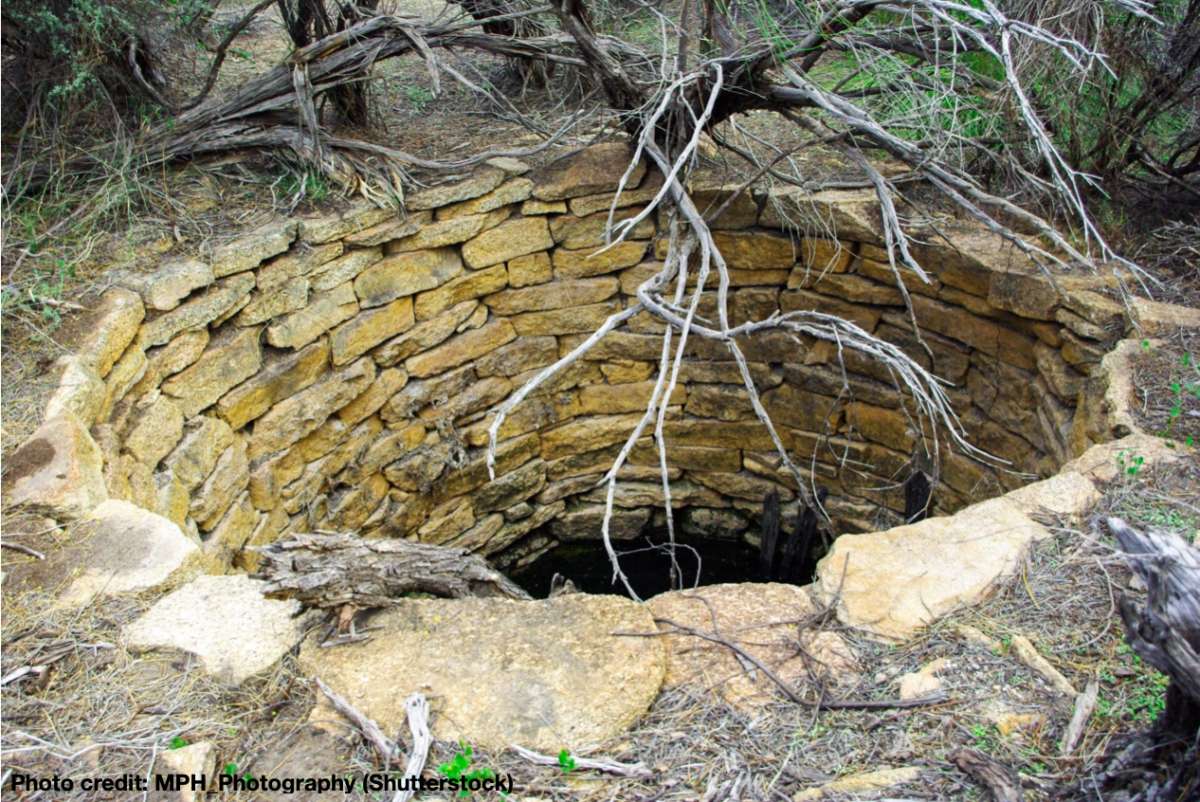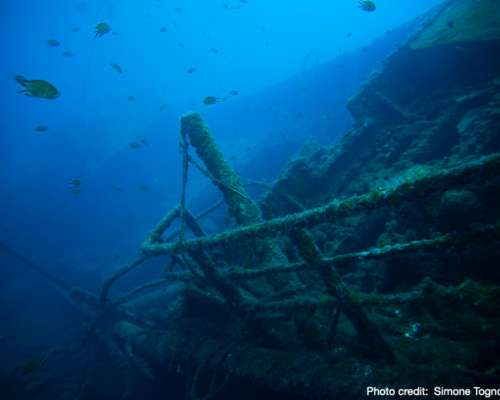One of the most precious commodities through the ages has been clean, pure water. Wars have been fought over water throughout recorded time, until even today. In the U.S. during the “Old West” period, there were occasions of conflict over water rights for cattle and in modern times, states such as Texas and Oklahoma and countries such as the Sudan and Egypt have faced off likewise over the commodity known as water. Water is one of the prerequisites not only for prosperity, but for life, itself.
More than seventy percent of the surface of the Earth is covered by water, but only three percent of it is fresh water. And, not all of that is suitable for human consumption. Before I begin some thoughts about the metaphorical significance of wells, however, I want to explain what wells are.
Hydrogeology 101
We get water suitable for drinking from features which appear on the surface. These are lakes and the lakes are generally supplied by rivers. Large lakes sometimes are appropriated as reservoirs, and they service major metropolitan areas. We can also find fresh drinking water from springs. In the case of a spring, water is stored underground under pressure, and is “forced” to the surface. Sometimes the water is hot (e.g. “Old Faithful” where the water is 400 degrees F. as it bursts to the surface.) Sometimes the water is mixed with salts or sulphur and you have “mineral springs.” Mineral springs are said to have healing properties because of the effects of the water on sore muscles and stiff joints. An example of a mineral spring would be Warm Springs, Georgia, where President Franklin Roosevelt often visited. The water temperature there remains a constant 88 degrees F.
By far, most drinking water (at least rurally) comes from wells. A well takes advantage of rain water and runoff water from snowmelt and flooding. This rain and runoff percolates through soil, sand or gravel in the ground until it reaches a layer of fractured rock where the water is stored. This is called an “aquifer.” The process of the water passing through the ground until it reaches the aquifer is a purifying one, and the water loses many hazardous properties. If the water table is much closer to the surface, then you have less filtration, and the water may present a greater risk to those who would drink it. Wells, usually 100 feet or a great deal deeper than that, are dug to reach the aquifer and then pump up the water to the surface through a two-or-three-inch pipe. But picture in your mind what the process was hundreds of years ago before we had pumps and mechanical drills. A farmer would have to dig a hole, perhaps three to five feet in diameter, for fifty or an hundred or more feet while removing the dirt via a bucket that was repeatedly hauled up to the surface for emptying by a second person. At any point, the farmer might hit bedrock, which meant he had to start all over somewhere else. Or, like what happened to many other farmers, the walls of the well might collapse on him and bury him alive. Likewise, he might get hit on the head from a bucket full of dirt that broke from the mooring and hurtled downward. But he had to dig until he reached water and a bit beyond that. If his well did not draw in a good amount of running water, then it would sooner than later become stagnant and dry up. After the farmer got a good, supply of water that could quickly recharge whatever he withdrew, he would shore up the walls of the hole and cap the top of the well so that animals would not fall in and/or pollute the well.
However, at some point the well would go dry, especially if neighbors moved in and tapped into the same aquifer, or if the water would become stagnant. If could then become a breeding ground for deadly bacteria and other germs. It would need to be re-dug or relocated in stances like this. If relocated, the dried-up well would be covered with some old boards. Occasionally, people (and particularly unsuspecting children), would fall through the boards and into the well.
Poison
Wells and springs are sometimes deadly. Bleached bones in the immediate vicinity of the well or spring is one warning sign, as is the lack of vegetation on the perimeter of a spring. In the Old West, some people who carelessly drank from a poisonous well or spring would carve the letter “P” in a nearby tree before they perished; a warning to the living. Historically, the poison was arsenic that either occurred naturally or leached into the water table from mining activity. However, it could be an acid/base issue as well. Alkaline contaminated has a deadly effect, as it did along the Oregon Train in what is now known as Wyoming. Wagon trains would have to post guards around one notorious place named “Clayton’s Slough” to keep horses and cattle from drinking the water. The skeletons of many dead oxen and horses just west of the slough was a “post hoc” warning to settlers of the danger of the water.
“American Indians also believed evil spirits hung out in springs. Some Plains Indians believed that bad spirits living in water holes shot invisible arrows into unsuspecting drinkers, causing them to get sick and sometimes die. Some believed it to be particularly bad medicine to drink from a spring at night” (Texas Escapes.) This notion of evil spirits being connected to wells and springs is not unique to North America. According to author Mike Cox: “Pagans on the British Isle believed spirits dwelled in wells and therefore could exercise their evil powers over the water.” Specifically, ““The well of St. Chad, at Lichfield…causes ague to anyone drinking its water. Even its connection with the saint has not removed its hurtful qualities. In west Highland…allusion is made to poison wells, and such are even yet regarded with a certain amount of fear. In the article on the parish of Kilsyth in the “Old Statistical Account of Scotland,” it is stated that Kittyfrist Well, beside the road leading over the hill to Stirling, was believed to be noxious (ibid, Texas Escapes.)” In benevolent contrast to these grave accounts we know from the Gospel of John (5:4) that in the case of the pool of Bethesda in Jerusalem, an angel would occasionally stir the water in a noticeable way, prompting pilgrims to rush to the pool (if they could) for a healing.
Today, wells are poisoned by chemicals, pesticides, or radioactive contaminants. Flynt, Michigan is a contemporary example of heavy metal poisoning in a city’s water system. Sometimes, wells are deliberately poisoned, as the Wehrmacht did in France and in Greece during World War II.
You have to assume that the water you find in wells or springs is capable of making you sick, even though it may not. Camping stores sell water purification kits and our Special Forces (e.g. SEALS) are taught how to purify the water they drink while on a mission. Many people across the country receive notices regularly sent to their homes to boil water when municipal septic systems are overwhelmed following flooding or when water pressure is particularly low.

Metaphorical applications
In some sense, a well is a place where we seek physical refreshment, whether children in sub Sahara Africa or parched farmers in drought stricken Baja California, or north across the border where the precious resource is becoming equally scarce. But we also thirst spiritually, too and there are many “wells” which attempt to address that thirst. David confirms this spiritual thirst in Psalm 63:1 where he says “…my soul thirsts for you, my body longs for you, in a dry and weary land where there is no water.”
Some people drink from “wells” that promote false supernatural teachings such as astrology, neopaganism or witchcraft, and channeling.1 Some “wells” are famous for adopting hallucinagenics such as LSD, peyote or marijuana to address spiritual thirst and commune with our Creator. Other people drink from “wells” dug by the Christian Identify movement that produce hatred towards other races. A popular “well” today draws people away from mainstream evangelicalism and seduces them with conspiracies from someone known only by the letter Q. Some “wells” focus on liberal politics to the exclusion of the Kerygma, while other “wells” fill peoples mind with conservative politics at the expense of their first love (Revelation 2:4.) Natural people who never read the Bible and who never met the Lord don’t know any better than to drink from these “wells.” But Christians have been taught to test the spirits. Are we so thirst-crazed or blinded that we toss sound teaching (and good sense) aside? Jack Deere, who once taught at the famous Dallas Theological Seminary, shared in one of his books how discouraged he would be while sitting on a graduate committee questioning soon to be ordained ministers. He says that very few of them could name a single Bible verse affirming that Jesus was God. So, if our pastors are weak in their theology, how can we expect otherwise from their flocks?
The most famous analogy comes from Jesus and the Samaritan woman He met at the well. John 4:4-29. This woman. The account is certainly imprtant enough to include in this post in its entirety”
The woman at the well
Now he had to go through Samaria. So he came to a town in Samaria called Sychar, near the plot of ground Jacob had given to his son Joseph. Jacob’s well was there, and Jesus, tired as he was from the journey, sat down by the well. It was about noon.
When a Samaritan woman came to draw water, Jesus said to her, “Will you give me a drink?” 8 (His disciples had gone into the town to buy food.)
The Samaritan woman said to him, “You are a Jew and I am a Samaritan woman. How can you ask me for a drink?” (For Jews do not associate with Samaritans.)
Jesus answered her, “If you knew the gift of God and who it is that asks you for a drink, you would have asked him and he would have given you living water.”
“Sir,” the woman said, “you have nothing to draw with and the well is deep. Where can you get this living water? Are you greater than our father Jacob, who gave us the well and drank from it himself, as did also his sons and his livestock?”
Jesus answered, “Everyone who drinks this water will be thirsty again, but whoever drinks the water I give them will never thirst. Indeed, the water I give them will become in them a spring of water welling up to eternal life.”
The woman said to him, “Sir, give me this water so that I won’t get thirsty and have to keep coming here to draw water.”
“I have no husband,” she replied.
Jesus said to her, “You are right when you say you have no husband. The fact is, you have had five husbands, and the man you now have is not your husband. What you have just said is quite true.”
“Sir,” the woman said, “I can see that you are a prophet. Our ancestors worshiped on this mountain, but you Jews claim that the place where we must worship is in Jerusalem.”
“Woman,” Jesus replied, “believe me, a time is coming when you will worship the Father neither on this mountain nor in Jerusalem. You Samaritans worship what you do not know;we worship what we do know, for salvation is from the Jews. Yet a time is coming and has now come when the true worshipers will worship the Father in the Spirit and in truth, for they are the kind of worshipers the Father seeks. God is spirit, and his worshipers must worship in the Spirit and in truth.”
The woman said, “I know that Messiah” (called Christ) “is coming. When he comes, he will explain everything to us.”
Then Jesus declared, “I, the one speaking to you—I am he.”
Just then his disciples returned and were surprised to find him talking with a woman. But no one asked, “What do you want?” or “Why are you talking with her?”
Then, leaving her water jar, the woman went back to the town and said to the people, “Come, see a man who told me everything I ever did. Could this be the Messiah?”
W.E. Vine (et al.) say that the “living water” (ὕδωρ ζῶν) is a reference to the Holy Spirit. In the Old Testament it is used to describe God. Albert Barnes notes: “The Jews used the expression “living water” to denote springs, fountains, or running streams, in opposition to dead and stagnant water. Jesus here means to denote by it his doctrine, or his grace and religion, in opposition to the impure and dead notions of the Jews and the Samaritans.” Again we see the danger in dead or stagnant water. But the Holy Spirit, like New Wine in the Gospel cannot be contained. Recall how the wine skins rupture in the parable (Luke 5:37.)
Sadly, this Samaritan woman, like billions of other people through the ages, stood in the presence of Christ without realizing it. For a brief moment in her tiring, unfulfilled life she felt as if a refreshing breeze blew through an open window, but then she could not take the next step, and likely spent the rest of her days drawing water from that well, which has since dried up eons ago. The remains of that poor woman’s bones are doubtedly to be found somewhere nearby under a few feet of dirt.
The path forward
There’s a perpetual drought forecast for the Southwestern U.S. which will affect almost every aspect of a person’s life. Your children’s lives. The water table is dropping and the aquifers suffer from a lack of snowmelt on top of increasing population and agricultural demands. There is also a spiritual drought approaching as the church struggles to find its way back. In both instances, water will be in precious short supply, and it will be more important than ever to choose very carefully which well we drink from.
1When I was a teenager in confirmation class, my pastor made a passing remark about a family in our congregation who had “gone off the deep end.” He explained that the family had a five or six year old daughter that they loved more than life, itself, and she had died from leukemia. Her parents, in their grief and vulnerability, turned to a “well” that promoted speaking with the dead. But it was not their daughter who spoke to them, but (rather) a lying spirit.



